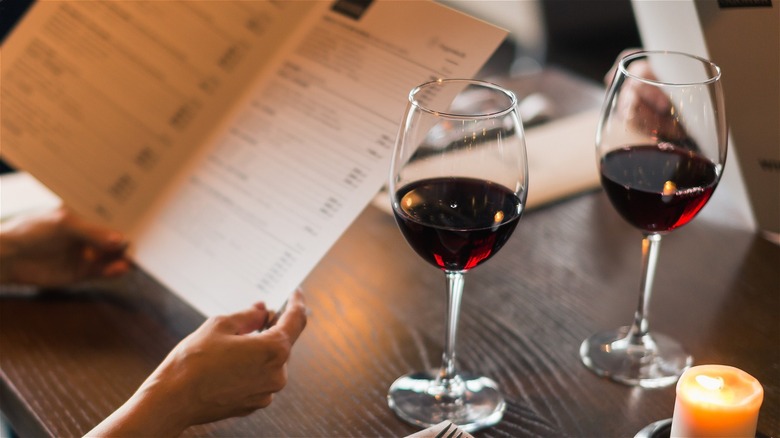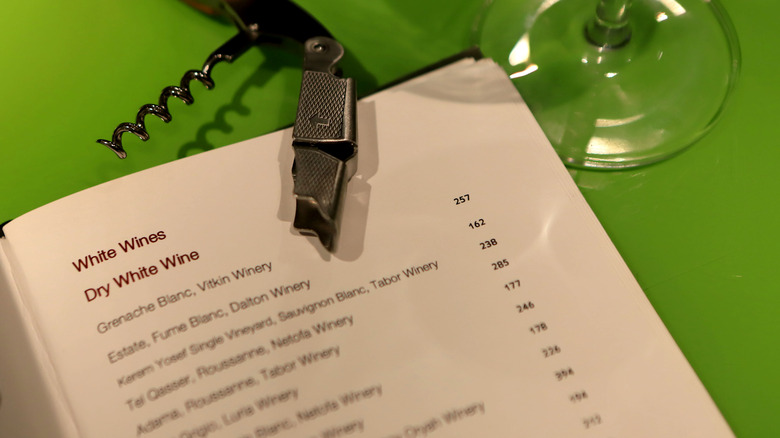How To Spot A Wine Menu's Decoy Effect And Why It's A Red Flag
While restauranteurs get into the business to share their love of food with the world, to succeed in an industry where 60% fail during their first year and a staggering 80% by the fifth year, they must also be salesmen, marketing executives, psychologists, and managers per CNBC. Unfortunately, having delicious food won't guarantee success.
Profit margins are notoriously small in the restaurant industry, ranging from 0-15%, with an average settling between 3-5%, and numbers varying between fast-food joints and Michelin-star restaurants per Toast. According to Grub Hub, fast-food restaurants and diners, which are less labor intensive than white tablecloth eateries, have higher profit margins averaging 6 to 9%.
Once restaurants have succeeded in getting customers into their seats, they utilize pricing strategies to influence customers to spend more money. Better Marketing points out that a carefully crafted menu can make or break a restaurant, down to the font size. Tactics like removing the currency sign and commas from prices are strategically omitted, so customers will "let their guard down." A study published by The Journal of Consumer Psychology found that when two prices are listed, the one with fewer syllables is perceived to be lower. At first glance, when seeing $27.82 and $28.16, the brain processes the first price as larger. For restaurants with wine menus, a tactic called "the decoy effect" is often used to influence how consumers order wine without you noticing. Here's how to spot the decoy and what you should do when you do.
Pricing strategies
Pricing strategies tap into the psychological phenomena our brains use to reduce mental overloads by "automatically deciphering information without conscious thought" (via Glimpse). According to owner Peter Baskerville, restaurants with a liquor license will employ the "decoy effect" to subconsciously nudge customers to purchase a particular bottle. Baskerville shared, "their wine list will include one or two top quality and very expensive wines in order to shift the customer's view of a reasonable choice to a higher pricing level than would happen if the decoy was not in place." Customers often pay more than planned, not necessarily getting a better quality wine (via Eat This).
Since customers don't want to be perceived as stingy, they will split the difference between the cheapest bottle of wine and the expensive "decoys" on the menu, opting for the wine priced in the middle, which will have the most significant profit margins for the restaurant. Similarly, when wines are offered by the glass, $6, $8, and $10, Better Marketing points out that restaurants are betting that your pride will pick the $8 glass of wine, which will be a lowered-end wine with the highest profit margins.
Your best bet when choosing a bottle of wine is to cover up the prices and find a bottle you are familiar with that you enjoy. If you're not a connoisseur, swallow your pride and go for the cheap wine by the glass or bottle. Those options are usually the best value and not marked up as much.

